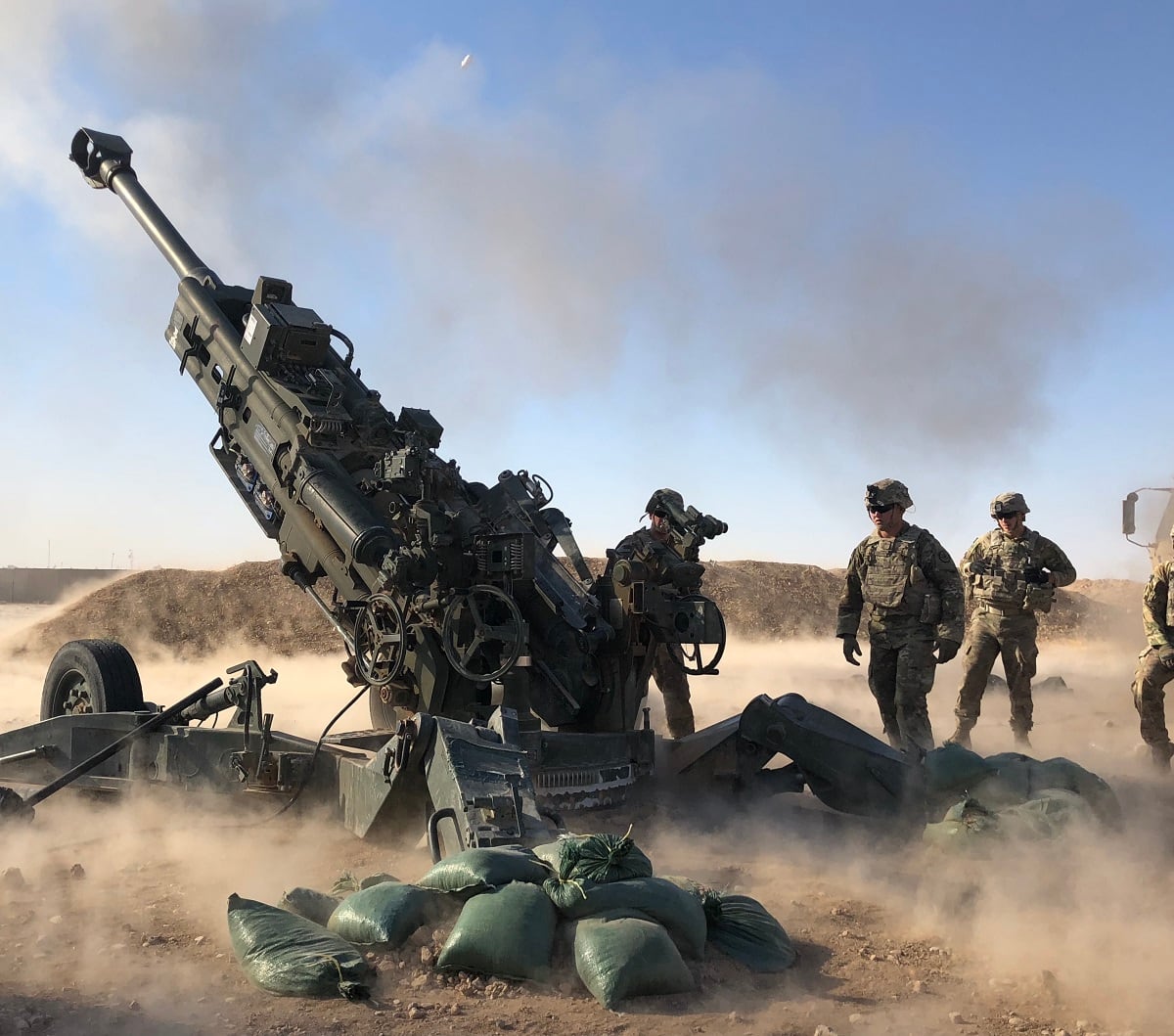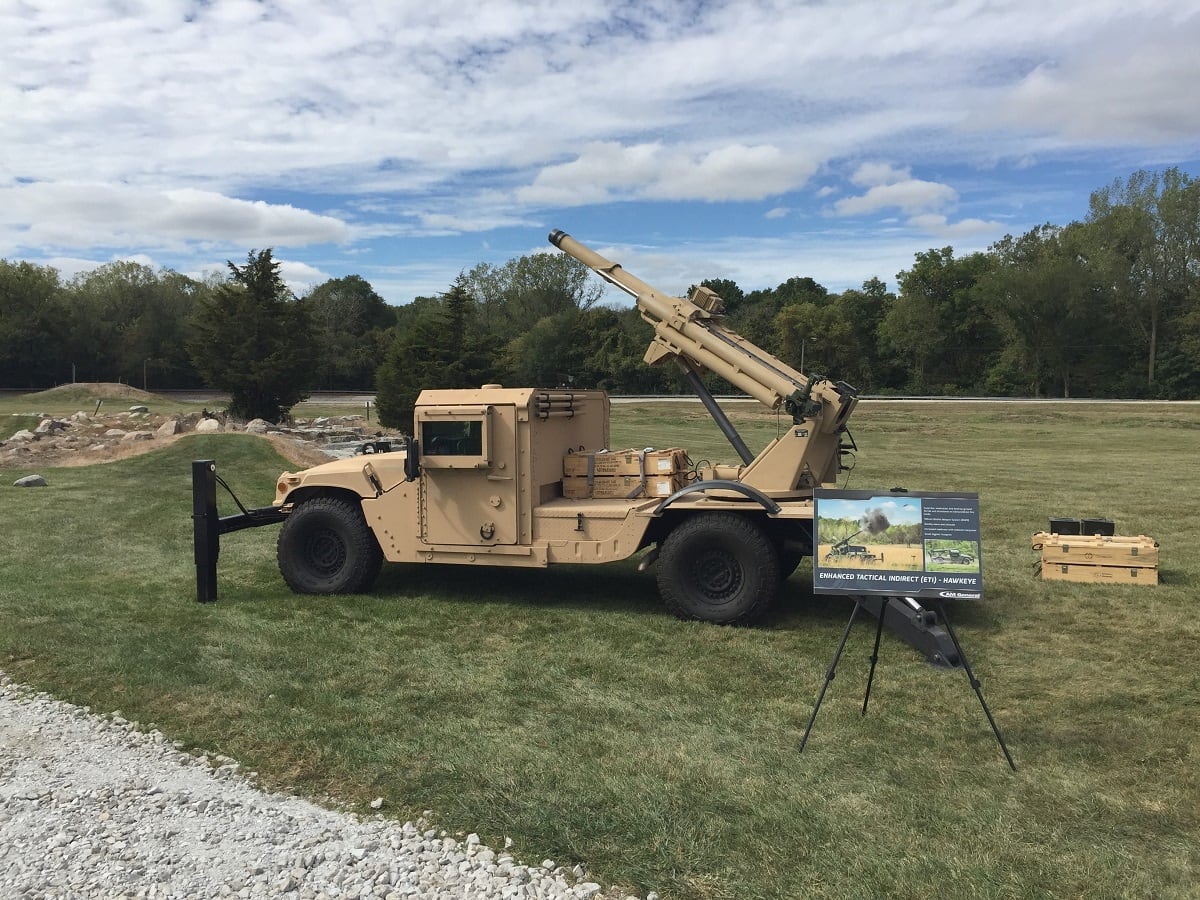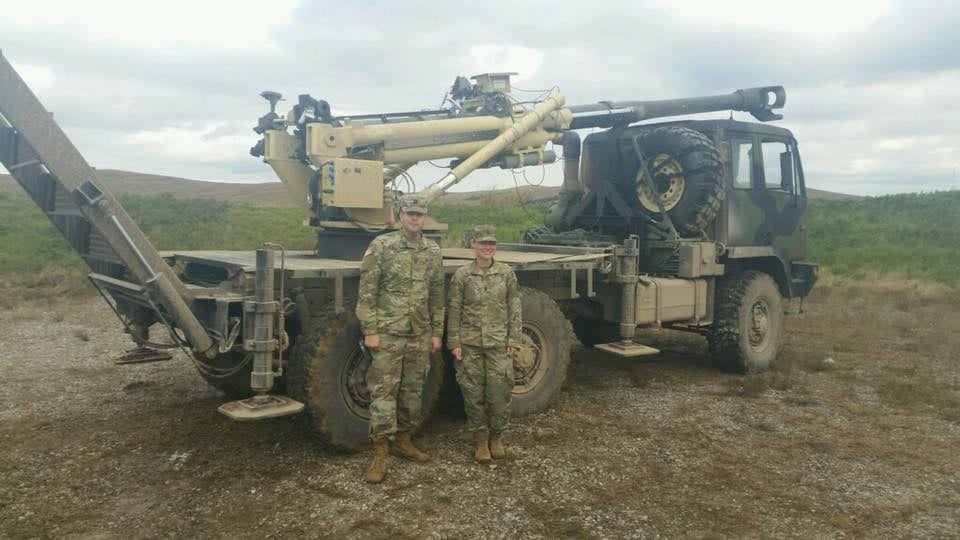At the Army’s most recent fires experimentation, many systems that industry showcased focused on ways for soldiers to detect incoming threats and neutralize them.
One such system is on its third tour of the Maneuver Fires Integrated Experiment at Fort Sill, Oklahoma, and has added new capabilities at each turn.
The MFIX is a two-week event in late October and early November at the home of the Army’s Fires Center of Excellence that sees as many as 35 government and industry entities on hand alongside soldiers to evaluate fires community needs.
RELATED

The Anti-Unmanned Aerial Vehicle Defense System is an attempt to tie together multiple options to detect and disable drones at a commander’s fingertips in one system.
The AUDS detects, tracks, identifies and defeats drones beyond the current fleet of signal jammers available to units.
It can jam the drone, shoot it with a 30mm chain gun or simply record video of the drone and hand off the intel to another entity, according to an Army release.
The newest addition to the system is a “passive detection program.”
“Why is that important? Because most systems here have radars and jammers that are always emitting,” said retired Col. Robert Menti, the business development director for Northrop Grumman’s innovation systems. “We have a passive detection capability so that we don’t have to have any radars turned on … so that we can detect rogues passively and the enemy can’t see us.”
The new configuration also allows the system to stay stowed so there’s no need to stop and set up complicated antenna masking — which enables commanders to detect on the move.

Another feature the company is experimenting with is advanced ammo to knock down drones with kinetic kills, when necessary. It uses proximity-fuzed ammo that links with sensors so that a ground station can hit a drone in flight.
The ammo uses a small radar at its front to sense the drone as it closes in distance and then explode.
The ammo has 50 percent more high explosive capability than traditional M789, the standard 30mm round used in Apache helicopters. It also has tracer abilities, allowing the shooter to track their rounds as they’re fired.
“Kind of like a skeet round when you're shooting skeet,’ Menti said. “It's the same idea. It's a pretty complex thing to do.”
The combined efforts with the AUD are aimed at a “fully integrated kill chain” that gives one system the option to use lethal and nonlethal means to detect and defeat drones.
“What we don’t want is a commander being forced to have different 15 systems in a [tactical operations center] and then having to fight through that internal friction trying to figure out the best way to service the target. We want to have that in an integrated platform so he, or she, can scale up based on what is going on,” Menti said.
Most counter-drone systems being used by soldiers on deployment are nonlethal. But as aerial, ground, surface and submerged drones get more sophisticated, Menti said that jamming will be less effective. That means having multiple options, some of them lethal, will be necessary.

Another simple-looking system made its MFIX debut this year.
The Army Assured Rapid Detection Validation Asymmetrical Resilient Kinetic, or AARDVARK, is a device that is the size of a Citizen Band radio used by long-haul truckers but lets soldiers detect GPS jammers.
Brought to the event by Lockheed Martin and TMC Designs, it goes a step beyond detecting jammers and allows users to display the power sources and send the information to other units or commanders to isolate the origin of the GPS jamming.
Current work uses the Mobile User Objective System, or MUOS, a narrow band military communications satellite system.
Next steps are to pair the AARDVARK with aviation, field artillery and electronic warfare systems so that the separate systems can share the data they detect.
Soldiers also got another crack at seeing a more mobile 105mm artillery piece in action with the Hawkeye system returning to MFIX. The weapon uses special soft recoil technology to mount the 105mm cannon on a Humvee platform.
The pairing comes from a partnership between AM General, the Humvee builder, and Magnus Group, the soft recoil design maker.
Another, larger version made its first appearance at MFIX as well. The Brutus is a 155mm cannon paired with the 5-ton truck, giving Red Legs a chance to move the piece to fire and displace more rapidly than current towed systems and allowing for opportunities to move artillery with air assets in a more compact package.
All systems, from GPS detectors to new arty configurations, received soldier feedback, officials said.
“MFIX provides us an environment where we are able to use live and virtual simulations to gain insights on ways emerging technologies can fit the needs of Soldiers in 2025,” said Maj. Anthony Findlay, acting experimentation and war gaming chief. “Additionally, MFIX provides the Army with feedback on changes in the areas of doctrine and training.”
Todd South has written about crime, courts, government and the military for multiple publications since 2004 and was named a 2014 Pulitzer finalist for a co-written project on witness intimidation. Todd is a Marine veteran of the Iraq War.




